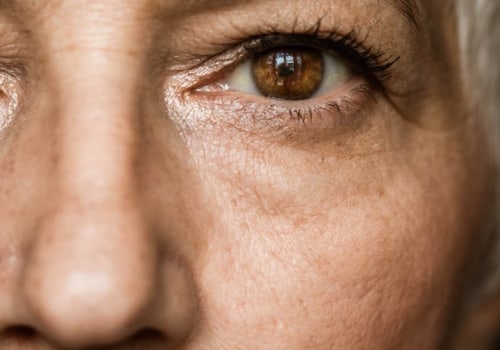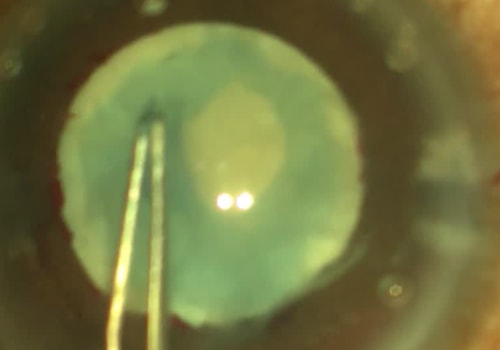Getting cataract surgery is an essential step in improving your vision. However, knowing what to expect after the procedure is necessary to ensure you are prepared.
Dry eye
A most frequent postoperative ocular complaint after cataract surgery is dry eye. Patients may have pre-existing dry eyes or may have been diagnosed with dry eyes before surgery. In either case, dry eye can interfere with postoperative recovery and quality of life. The good news is that dry eye can be treated, which will help improve the patient's symptoms and quality of life over time.
Several clinical tests can be used to gauge dry eye risks. Patients can also be treated prophylactically with warm compresses or warm compresses with topical artificial tears. In addition, a dry eye treatment plan can help patients manage ocular surface diseases, which will improve their symptoms over time.
Several factors can increase the risk of developing dry eye, including age, diabetes, and the use of systemic medications. In addition, the aging process, windy weather, and cosmetics can also contribute to the development of the dry eye.
A comprehensive dry eye examination should be performed before cataract surgery. The procedure includes testing the ocular surface using several stains to detect corneal pathology. In addition, a slit lamp test shines a bright light into the eye.
A fluorescein test can be used to determine corneal surface disturbance. Another test, the Schirmer test, measures the number of tears produced. It requires numbing of the eye. The results of the test are clinically significant. Several studies have indicated that females are more likely to develop postoperative dry eye than males.
Blurred or cloudy vision
Whether you have just undergone cataract surgery or have been suffering from cloudy or blurred vision for a long time, it is essential to know how to treat your condition. In most cases, vision improvement will be noticeable in a couple of days. However, if your blurry vision is persistent, you should schedule a follow-up appointment with your ophthalmologist.
The most common cause of cloudy or blurred vision is a cataract. A cataract is a condition in which the proteins in the lens begin to break down. Once the proteins in the lens have broken down, the lens can no longer transmit light as it once did.
Another common cause of blurred vision is macular degeneration. In this condition, the retina's central idea is lost. Symptoms of this condition include blurred vision, glare, and halos around lights. Typical treatment for macular degeneration is contact lenses or surgery.
The cornea is the transparent front part of the eye. When the inner layer of cornea cells dies, fluid collects in the eye. As the fluid accumulates, it causes the eye to swell. However, the swelling usually subsides within a few days.
An alternative to cataract surgery is laser surgery, called YAG capsulotomy. This is a painless procedure that thins the lens capsule. The process takes five minutes and does not involve an incision.
Although cataract surgery is usually successful, there are some pitfalls. The first is the risk of blurry vision. While your vision should improve in a few days, your ophthalmologist may prescribe medications to help the eye heal. If your vision is severely blurred, you may want to take additional days off of work.
Poster capsule opacification
The cloudy lens is removed and replaced with an artificial intraocular lens during cataract surgery. This new lens can be cloudy or clear. However, if there is a significant amount of opacification, it can interfere with the patient's vision. Opacification is known as Posterior Capsular Opacification (PCO). It is the most common complication of cataract surgery.
PCO can occur weeks, months, or even years after surgery. Specifically, it has two types: proliferative PCO and fibrotic PCO. Proliferative PCO involves the growth of epithelial cells on the surface of the posterior capsule. The development of these cells is associated with the wrinkling of the posterior capsule. As a result, it affects patients' visual acuity by reducing high contrast sensitivity. Similarly, fibrotic PCO can affect visual acuity by causing glare.
Several studies have investigated the causes of PCO. They have also attempted to prevent or delay the formation of PCO by using different methods. In addition, they have looked into the use of better materials for intraocular lenses.
The most commonly used material for this is hydrophobic acrylic. However, silicone has also been used. Silicone IOLs have been noted to have increased capsulorhexis contraction.
Another cause of PCO is the presence of residual cortical fibers. These fibers are believed to play a role in developing fibrous PCO. However, they can also impede the ability of the new lens to see clearly.
Glare and halos around lights at night
Seeing halos around lights isn't always a problem, but it could signify a more serious eye condition. If you are seeing them in conjunction with other symptoms, you should contact an expert for further testing. This may prevent the problem from worsening.
Halos are bright circles that can be seen around lights. They are caused by light scattering and diffraction. They usually occur around lights at night. Some people report seeing these circles more often than others.
These halos can also be a side effect of cataract surgery. Cataract surgery is a procedure that replaces the cloudy lens in the eye with an artificial lens. This procedure can improve your eyesight and reduce glare. It is also helpful to wear sunglasses with tints to reduce glare from the sun.
Seeing halos around lights may also be a sign of glaucoma. Glaucoma is an eye disease that causes damage to the optic nerve. If you notice symptoms of glaucoma, it is a good idea to contact your eye care professional.
In addition to seeing halos around lights, you may also notice the blurry vision. This can be a symptom of other eye problems, including dry eyes. Taking care of your eyes with a healthy diet and a routine eye exam is an excellent way to prevent these problems.
Halos and other vision glares are common in older people. This is because they take more time to adjust to different light levels. They also have more sensitive eyes.
Inflammation and infection
During cataract surgery, infections and inflammation can occur. These infections can lead to pain, redness, light sensitivity, and even vision loss. However, they are not common. Most patients are informed of the risks associated with surgery and are encouraged to follow the instructions of their ophthalmologist.
If you have an infection or inflammation, visit your eye specialist. They can help you determine if it's caused by cataract surgery. The surgeon can give you antibiotics or change your eyedrops if the problem persists. If the inflammation clears up, you can stop taking the eye drops.
You'll need antibiotics if the inflammation is caused by a bacterial infection. You'll need a different treatment if the disease is caused by a viral infection. Some types of endophthalmitis respond to topical steroids.
You may also experience dry eye after surgery which can last up to two months. However, topical antibiotics can help reduce the number of organisms on the ocular surface. This is most effectively accomplished through the application of a disinfectant.
When the blood-aqueous barrier breaks, white blood cells can enter the eye. This can cause light sensitivity, pain, and swelling. Symptoms may appear one or two days after surgery. If the inflammation persists, you may need to return to your ophthalmologist.
Knowing that the risk of infection after cataract surgery is rare is essential. In fact, it's a complication that every surgeon wants to avoid.
Return to work
Having cataract surgery is a great way to improve your vision. But it also takes a bit of time to recover.
The best way to recover from cataract surgery is to rest and take it easy. This means you should avoid heavy physical activities. Moreover, you should avoid doing the same thing you did before the surgery.
For example, you should be okay with swimming in a pool. This is because the water might contain bacteria that can clog your eye. However, it would be best if you also avoided the hot tub.
Aside from the pool, you should also avoid rubbing your eye. This can lead to a nasty infection. Also, it would help if you did not put a mirror near your eye.
Remembering your doctor's orders for eye drops is the most important thing to remember. This will not only keep your eye moist but will also help to ensure a quick recovery.
A postoperative appointment should also be scheduled to check your progress. You may also be advised to take some time off work. Then, you can return to work at your own pace if you're comfortable.
The best time to go about this is to take one to three days off work. Then, you should be ready to resume your normal activities a few weeks later.
While you're off work, you're going to need to rest. You can get an idea of how much rest you need by talking to your doctor.



